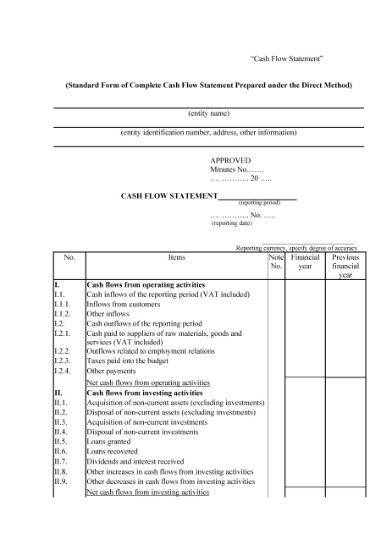
What is a Backlog? Definition & Common Challenges

We can have multiple scrum teams that work on a single product backlog. If a product is reasonably significant, and only the scrum team cannot do it, this will often lead to the creation of multiple scrum teams. It is a more efficient way of handling products with a broader scope. Product refinement is lead by the Product Owner and attended by the Scrum Team (Scrum Master and the development team). Also, the internal and external stakeholders get an invitation as needed.
Let’s say that in our example above, the company has a sales backlog of 10 orders per week. One possibility is that they’re receiving 110 orders per week while their processing capacity remains at 100 percent, resulting in a steady backlog of 10 orders each week. Backlog is the list of tasks that have been prioritized for a given time period.
What is a Backlog
Therefore, the items ranked highest on the list represent the team’s most important or urgent items to complete. If you’re not already using a software program to track your work in progress and backlog, you could be leaving too much of your company’s welfare to chance. There are several software programs that you can use to track your WIP, removing guesswork and errors from the equation. These programs can also help you organize many of your other project management tasks, including job costing, AR/AP, and change orders. Very often, contractors take a full backlog as the opportunity to grow and expand.
In the construction business, everything comes down to the contract. Lien waivers are an important part of optimizing construction payment. Whether you’re flush or struggling, your manpower needs to align to maintain profitability. If you’re flush with work and financially able, you should expand your workforce. If you’re barely above water and struggling to keep the lights on, you might have to reduce the size of your staff or hire ace salespeople.
Strategies for managing a construction backlog
The contents of your backlog paint a picture of how you’re winning and fulfilling new business. Well, an ideal backlog is one that stays roughly the same in size even as the amount of new business and the rate of delivery both increase. Once the product backlog is built, it’s important to regularly maintain it to keep pace with the program. Product owners should review the backlog before each iteration planning meeting to ensure prioritization is correct and feedback from the last iteration has been incorporated.
- Taking the time to look at your backlog and planning how you’re going to tackle it will help remind you that a backlog is simply a temporary setback that you will overcome.
- The backlog helps in determining the work remaining, which we usually do at the end of every sprint.
- The dynamic nature of a product backlog provides teams with a way to manage their learning about the desired outcome and potential ways to deliver that outcome.
- Eventually this leads to the entire backlog becoming obsolete.
- In association to that you should have a soft “one in, one out” policy as you are hitting the DIP limit you have set for yourself.
- However, it’s hard to give a generic advice on how long a roadmap should be as it depends on a lot factors, such as product type and market maturity.
However, biting off more than you can chew with the intention of expanding to handle it can be a bad decision if you aren’t ready. Overextension and cash flow issues thrive during periods of growth, and many companies struggle to recover from their effects. Again, customers might question your ability if you have a long backlog. Yes, you have customers, but a long backlog could mean that you’re behind and can’t manage your projects effectively.
Mastering Prioritization
Johan Karlsson is an Agile coach and Senior Consultant who builds bridges between customers and product teams. With an engineering and development background, he is the Product Manager for Hansoft, Helix DAM, and Helix Swarm. He’s a backlog nerd with the ambitious goal to bring Agile and lean principles into modern enterprise environments. Sales backlog refers to when the number of orders your company has taken but hasn’t yet completed. It is common in growing businesses and can indicate a higher demand for a product. If your sales backlog gets too big, it can lead to customer frustration, canceled orders, and — ultimately — lost revenue.
- Prioritization could also highlight tasks that are no longer priorities and don’t actually need to be completed.
- Product backlog items vary in size and extent of detail based in large part on how soon a team will work on them.
- The existence of a backlog may have either positive or negative consequences.
Orders that remain unfulfilled or unprocessed are considered backlogged orders. These incomplete orders represent unearned sales revenue that remain available for the company to earn. When managed effectively, the company’s backlog can ensure that customer demand is satisfied.
The potential cons of having a backlog
The excellent repository becomes a giant junk drawer no one can make sense of or has the time and motivation for either. The product backlog contains every potential item under consideration for a product. The backlog runs the gamut from minor tweaks to major additions. Some of these outsourced controller services accounting manager services backlog items end up on the docket for upcoming sprints. While others remain in the queue until more immediate priorities arise. When a product team gets together to plan work for a specific upcoming period, a backlog makes assigning tasks to each person much more straightforward.
A project backlog is a prioritized and structured list of deliverables that are a part of the scope of a project. It is often a complete list that breaks down work that needs to be completed. While a backlog could mean your product is in high demand, you should still pay close attention to how big it gets and take steps to ensure customers aren’t waiting too long for their orders. As a business person, it’s important to know which types of sales backlog you’re dealing with. Creating a backlog can be done in many different ways, with the most common method being to create user stories.
